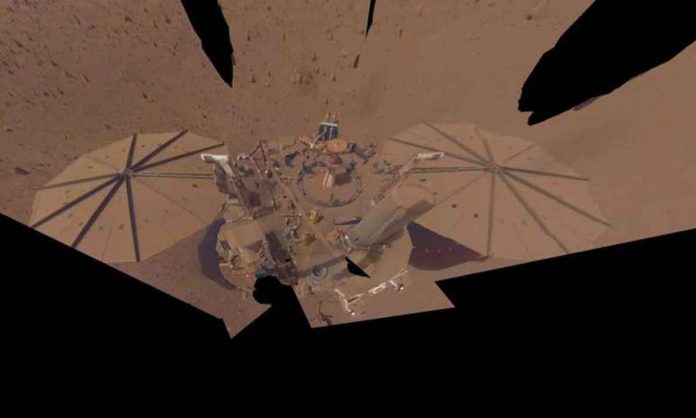The mission’s team has decided to keep the seismometer running for longer than planned, despite the fact that the lander will run out of power sooner as a result.
As the power available to NASA’s InSight Mars lander diminishes by the day, the mission’s timeline has been revised to maximise the science that can be conducted. To save energy, the lander was supposed to shut down the seismometer—last InSight’s operational science instrument—by the end of June, surviving on what power its dust-laden solar panels could generate until around December.
Instead, the team intends to programme the lander so that the seismometer can continue to operate for an extended period of time, possibly until the end of August or early September. This will cause the lander’s batteries to discharge faster and the spacecraft to run out of power at the same time, but it may allow the seismometer to detect additional marsquakes.
“InSight hasn’t finished teaching us about Mars,” Lori Glaze, director of NASA’s Planetary Science Division in Washington, said. “We’re going to get as much science as we can before the lander shuts down.”
After completing its science objectives, InSight (short for Interior Exploration using Seismic Investigations, Geodesy, and Heat Transport) is on an extended mission. Since landing on Mars in 2018, the lander has detected over 1,300 marsquakes, providing data that has allowed scientists to determine the depth and composition of Mars’ crust, mantle, and core. InSight has collected invaluable weather data, investigated the soil beneath the lander, and studied remnants of Mars’ ancient magnetic field with its other instruments.

Except for the seismometer, all instruments have already been turned off. InSight, like other Mars spacecraft, has a fault protection system that automatically activates “safe mode” in dangerous situations, shutting down all but the most essential functions and allowing engineers to assess the situation. Low power and temperatures that exceed predetermined limits can both activate safe mode.
The mission team is turning off InSight’s fault protection system to allow the seismometer to run as long as possible. While this allows the instrument to operate for a longer period of time, it leaves the lander vulnerable to sudden, unexpected events that ground controllers would not have time to respond to.
“Rather than conserving energy and operating the lander with no scientific benefit, the goal is to get scientific data all the way to the point where InSight can’t operate at all,” said Chuck Scott, InSight’s project manager at NASA’s Jet Propulsion Laboratory in Southern California.

